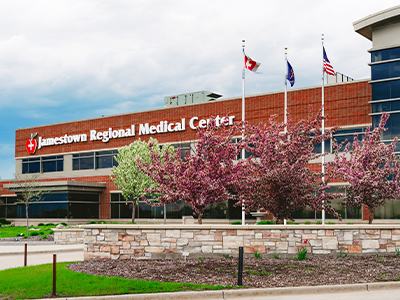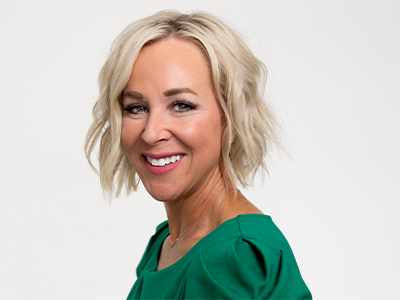At Jamestown Regional Medical Center, we recognize the vital role that innovation and collaboration play in sustaining rural healthcare. The recent article from Prairie Business highlights how North Dakota’s independent hospitals and clinics are leveraging partnerships, such as the Rough Rider Network, to enhance patient care and share best practices. These initiatives are crucial in addressing the unique challenges faced by rural communities, ensuring that residents receive high-quality medical services close to home.
Courtesy of Prairie Business
North Dakota’s independent hospitals and clinics are benefiting from collaboration.
When Pete Edis stepped into the role of CEO at McKenzie Health in December 2021, he was faced with a steep challenge and high priority – to get a labor and delivery department into the medical facility. At the time, expectant mothers were having to travel more than an hour to deliver their babies. Employers reported having trouble recruiting for jobs in Watford City, North Dakota, because the hospital lacked an obstetrics department.
“How are you going to get a family to move here if you don’t have the ability to have a baby? My predecessor had started the groundwork but it was not constructed yet. We didn’t have a staff, we didn’t have a unit. That became the priority,” he said. The rural area in the western part of the state is known for its half-million acres of Little Missouri Grasslands in a region rich in oil reserves.
Fast forward one year and the McKenzie Health Hospital was delivering babies. That busy year was filled with huge hurdles and much collaboration.
“Bringing up labor and delivery was a monumental challenge at a time when many other hospitals our size are getting out of it. It was sorely needed in the community and I figured that out after being here a short amount of time,” Edis said. “In 2023 we delivered 67 babies and so far this year, we’ve delivered 75. That’s many more babies delivered here than in the past 30 years.”
More than half of the rural hospitals in the country don’t offer labor and delivery services. In North Dakota, 79% do not, according to the Center for Healthcare Quality and Payment Reform . Of the state’s 39 rural hospitals and rural emergency hospitals, 31 do not have obstetric services as of July 2024. The median drive time to a hospital in North Dakota with OB services is 58 minutes.
One in five people in the United States live in rural areas, and according to the U.S. Centers for Disease Control and Prevention (CDC), those who live in rural communities face numerous health disparities compared with their urban counterparts. Rural residents face higher risks of death due to limited access to specialized medical care and emergency services, and exposure to specific environmental hazards.
The greater risks are compounded because those in rural areas tend to be older and sicker than those living in urban areas. Rural residents have higher rates of poverty, less access to health care and are less likely to have health insurance, the CDC says. There are solutions. Gaps in rural health services can be addressed and improved with initiatives such as preventative care, wellness programs and the sharing of resources.
Hospital closures are an added stressor to health-care challenges in rural areas. The American Hospital Association reported that between 2010-2021, 136 rural hospitals closed, 19 in 2020 alone. It’s not just hospitals. Nursing home closures are impacting rural communities, too. In North Dakota, Mohall’s Good Samaritan Society and St. Luke’s Sunrise Care Center in Crosby have closed in the last few years.

The challenges in rural health care are steep but not impossible, thanks to supportive communities and partnerships, like the Rough Rider Network. The Rough Rider Network was formed just two years ago by 23 critical-access hospitals in North Dakota, along with their more than 50 clinics, to allow them to stay independent but be able to tap into each other’s resources and knowledge and to have collective bargaining power with insurance companies and vendors. The network’s member hospitals care for more than 225,000 patients across the state.
Rough Rider Network Board President Ben Bucher said one of the main benefits of being part of the network is clinical integration, meaning access to shared medical knowledge and resources. Bucher is also the CEO of Towner County Medical Center in Cando, North Dakota.
“We can set best practices and share best practices. If there’s a certain hospital struggling with a particular medical condition, or maybe some sort of outbreak, we can use evidence-based medicine to share information. We want to make sure we have access to information physicians and nurses can use from their peers to help guide them through certain conditions,” Bucher said. “We can use shared services. For example, IT – not every hospital has the luxury of having an in-house IT specialist. If you are lucky to have one, it can be quite expensive. What this network can do is share that expertise across the network. We don’t have one hired yet, but potentially this network could hire an IT director who would oversee all of the hospitals, which would lower the cost for us in Cando, in Harvey. We wouldn’t each need to have our own.”
He said the trajectory that health care costs are on is not sustainable, and by creating the network, they’re trying to “bend the curve and find a way to lower health care costs.”
“If we can come together with economy of scale, we’re able to negotiate better deals with certain vendors to lower our costs and ultimately, if we can save money, we can pass those savings on to our patients,” he said. “The other thing we can do is increase quality of care. We call that the triple-aim. Triple aim is healthier patients, healthier communities and at a lower cost. The quadruple aim would be happier employees, as well.”
Kylie Nissen is chief of staff at Cibolo Health, and executive director at the North Dakota Rural Health Association. Cibolo Health helps independent rural hospitals create networks with their peers to overcome the obstacles rural health care providers face. In her role, Nissen works with both the Rough Rider Network in North Dakota and the Headwaters Network in Minnesota.
“Each of those are their own clinically integrated network of rural independent hospitals. It’s a way for these rural independents to stay open, provide quality care and keep decision-making local in their own communities,” she said. “These networks are also seen as a recruitment and retention strategy. You can reach out and get help or provide assistance, so they’re never alone. You can feel pretty isolated in some of the little towns. When recruiting new professionals right out of college or trade school, they won’t feel alone, there’s always someone there to help.”
She and Bucher gave a presentation about the Rough Rider Network in late September at the National Rural Health Association RHC/CAH Conference in Kansas City, Missouri.
“This is becoming known throughout the nation as a great way to keep rural health care alive, essentially,” she said.
At the Center for Rural Health, located at the University of North Dakota’s School of Medicine and Health Sciences in Grand Forks, acting Director and Assistant Professor Brad Gibbens and his team bring together expertise and help share knowledge and tools with a wide range of rural and tribal stakeholders. The center has 65-70 staff and faculty members who work in different capacities for all aspects of health care, including behavioral and mental health.
“We do assessments, strategic planning, help to write grants – we’ll come in free of charge and do a two- to four-hour grant writing workshop. There’s a lot of things we do at the community level,” he said. “Rural is a very good place for innovation and we’ve seen a significant amount of innovation coming out of the rural areas for years.”
Under the Affordable Care Act, all nonprofit hospitals are mandated to complete a community health needs assessment every three years and then develop an implementation plan. The Center for Rural Health works with over 95% of the critical access hospitals to help them complete their CHNAs, Gibbens said. The most recent aggregate shows the top two community health issues reported in need of addressing are mental or behavioral health and substance abuse. The third-ranked need was attracting and retaining young families.
“People who live in rural communities, if they are going to survive, know they need younger families coming in. The fourth highest-rated concern out of rural North Dakota is having enough child daycare services,” Gibbens said.
To address community health needs and in some cases, growing populations, several rural health facilities in North Dakota are undergoing expansions. In Stanley, Mountrail County Health Center is taking on such a project. It will add services to the hospital, expand residences at its assisted living facility, and build a state-of-the-art nursing home facility.
The first phase is the nursing home addition, started over the summer and running through March 2026. Additional phases will include an ambulance garage addition, kitchen renovations, an infusion suite addition, MRI addition and a specialist care suite, and the final phase will be adding on to the assisted living facility, Rosen Place. The entire project is anticipated to be wrapped up by the end of 2027.
Gloria Larsgaard, an architect and project manager at EAPC’s Minot office, has been working on the replacement for the aging nursing home. She’s studied nursing homes for the past 10-15 years and has seen a change, moving from an institutional-type setting to one that’s more like home.
“The trend in nursing homes is private rooms. We really put a lot of care into making them look a bit more upscale and homey,” she said. “They have a couple of double rooms for family members who may want to share the room. We have a couple of bariatric rooms, which not all nursing homes can provide.”
Mountrail Bethel Home Administrator Stephanie Everett said the current facility is a 36-bed nursing home with 10-bed basic care. She talked about the challenges of maintaining an aging building.
“The nursing home is 60 years old and it’s falling apart. When you go into the plumbing, it’s all cast iron. Whenever they go in to fix something, it just crumbles. The rooms are too small, the bathrooms can’t take the lifts, it was built before we used lifts. The residents coming into the nursing homes need higher levels of care than they did 60 years ago. Right now, we have twin-size beds. The new, bigger rooms will accommodate full-size beds. It’s just needed,” she said.
Like many leaders in rural areas, Everett wears several hats – she’s also the Mountrail County Medical Center CEO and the Mountrail County Health Foundation director, and handles marketing and public relations for the health system. They’re part of the Rough Rider Network.
“You don’t make money running a nursing home or running a critical access hospital. That’s why fundraising is so important. In order to move forward for the next 60 years, we have to put money into the plant. I went to the county commissioners and they gave us a wonderful donation, a $25 million pledge, $15 million this year and $10 million for next year,” she said.
Fundraising is important for independent hospitals, which can depend on generous community contributions to help complete projects or add amenities to make patients and residents more comfortable.
Lynn Welker-Fevold, chief of communications, marketing, strategy and innovation at McKenzie Health, said contributions have helped turn a unique idea into reality.
“It’s a project that’s taken about three years to come full circle. It started during COVID,” she said. “We recently completed a project that includes a greenhouse, which is almost finished, an expansion to our chapel and a courtyard for our long-term care facility, the Good Shepherd Home. It was probably about a $2.3 million project and we had well over 200 contributors to make this happen.”
The Benefit Fund of McKenzie Health raises money for all sorts of things, she said, from capital projects and equipment to educational opportunities.
“It offsets the needs we have at the health care facility along with quality of life and wellness items,” she said. “Our benefit fund board is excellent to work with. They’re very engaged in the community and very invested in what we’re working on.”
Jamestown Regional Medical Center is also part of the Rough Rider Network. JRMC President and CEO Michael Delfs believes the impact the high-value network is already having is positive. The quality of care for patients in rural areas is “amazingly good and will continue to be really good because we’re all working on the same things,” he said.

“All of us want to remain independent, not just because we want to, but because our communities need to know that the services that are important to them are what will be looked at,” Delfs said. “In some of the larger systems, often that system has such a huge geographic footprint, that they may have 100 different things that are a priority and your local community may not be it. This is a local way for us, as independent hospitals, to be really responsive to our communities without trying to figure out how to become important if you’re part of a large system.”
JRMC has OB/GYN services and Chief Nursing Officer Trisha Jungels said it’s because they listened to women in the community about what their needs are.
“One of the super positive sides of JRMC being independent, is we have primary care providers that work for Sanford and Essentia in Jamestown, that deliver babies. In tertiary care, family practice doctors are not delivering babies. In partnership with primary care and OB/GYN, JRMC is able to safely and effectively deliver babies in this region,” she said.

“To paint a broader picture, most critical access hospitals are now out of or are getting out of delivering babies,” Delfs added. “We couldn’t handle more complicated births if we were just family medicine. Our program has the highest standards.”
Back at McKenzie Health, also part of the Rough Rider Network, Pete Edis appreciates being part of the network and having a group of colleagues who can act as resources.
“It’s brought us all together in very similar situations, to figure out how we each overcome those challenges,” he said.
Value-based care is a newer philosophy to describe health care that’s designed to focus on the quality of care, provider performance and the patient experience. Wellness programs, preventative care and coordination of care can help keep people out of the hospital. If a facility can show that patient outcome is positive, the providers are paid more because they’ve shown, thorough metrics, that they’re doing well in managing the patient. Some experts think it’s a revolutionary way to look at the health-care business in the United States.
Edis said he likes the idea of value-based care and showing outcomes.
“We have very good outcomes, very low infection rates. We replace shoulders, hips and knees at our hospital and we have a great surgeon. We appreciate being able to show those outcomes, and saying we deserve to get paid based on those outcomes. We are successful because our community supports us, not just financially, but by embracing the idea they can get great local medical care.”


